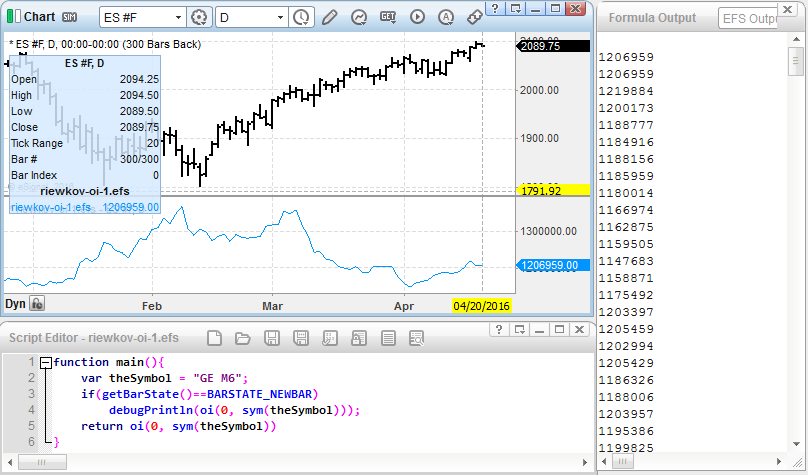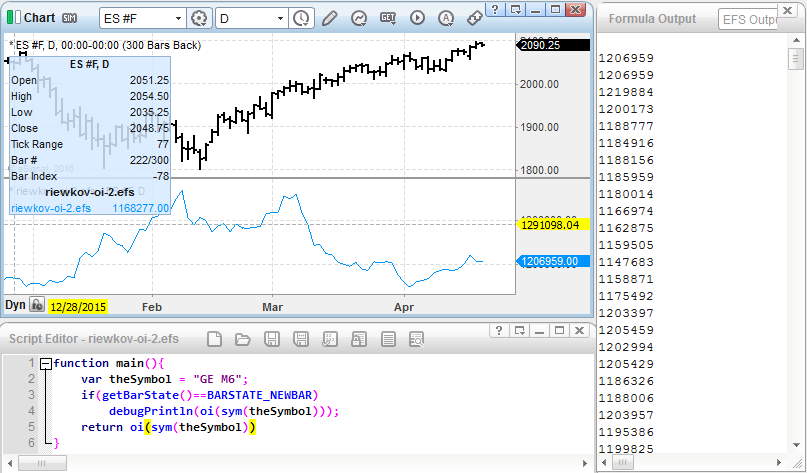Hello,
What's the correct way to format a call to oi() to get the open interest of a specific futures contract?
For example, let's say I load a chart of continuous S&P eMini futures, symbol "ES #F"
I then want, via efs, to get the latest open interest value for some other contract, say June 2016 Eurodollars, symbol "GE M6".
I've tried the following to accomplish this (from a script added to a chart of ES #F), none of which work:
theSymbol = "GE M6";
debugPrintln("1) " + oi(0, theSymbol) );
debugPrintln("2) " + oi(0, sym(theSymbol)) );
debugPrintln("3) " + oi(theSymbol) );
debugPrintln("4) " + oi(sym(theSymbol)) );
Any thoughts?
Thanks
What's the correct way to format a call to oi() to get the open interest of a specific futures contract?
For example, let's say I load a chart of continuous S&P eMini futures, symbol "ES #F"
I then want, via efs, to get the latest open interest value for some other contract, say June 2016 Eurodollars, symbol "GE M6".
I've tried the following to accomplish this (from a script added to a chart of ES #F), none of which work:
theSymbol = "GE M6";
debugPrintln("1) " + oi(0, theSymbol) );
debugPrintln("2) " + oi(0, sym(theSymbol)) );
debugPrintln("3) " + oi(theSymbol) );
debugPrintln("4) " + oi(sym(theSymbol)) );
Any thoughts?
Thanks


Comment